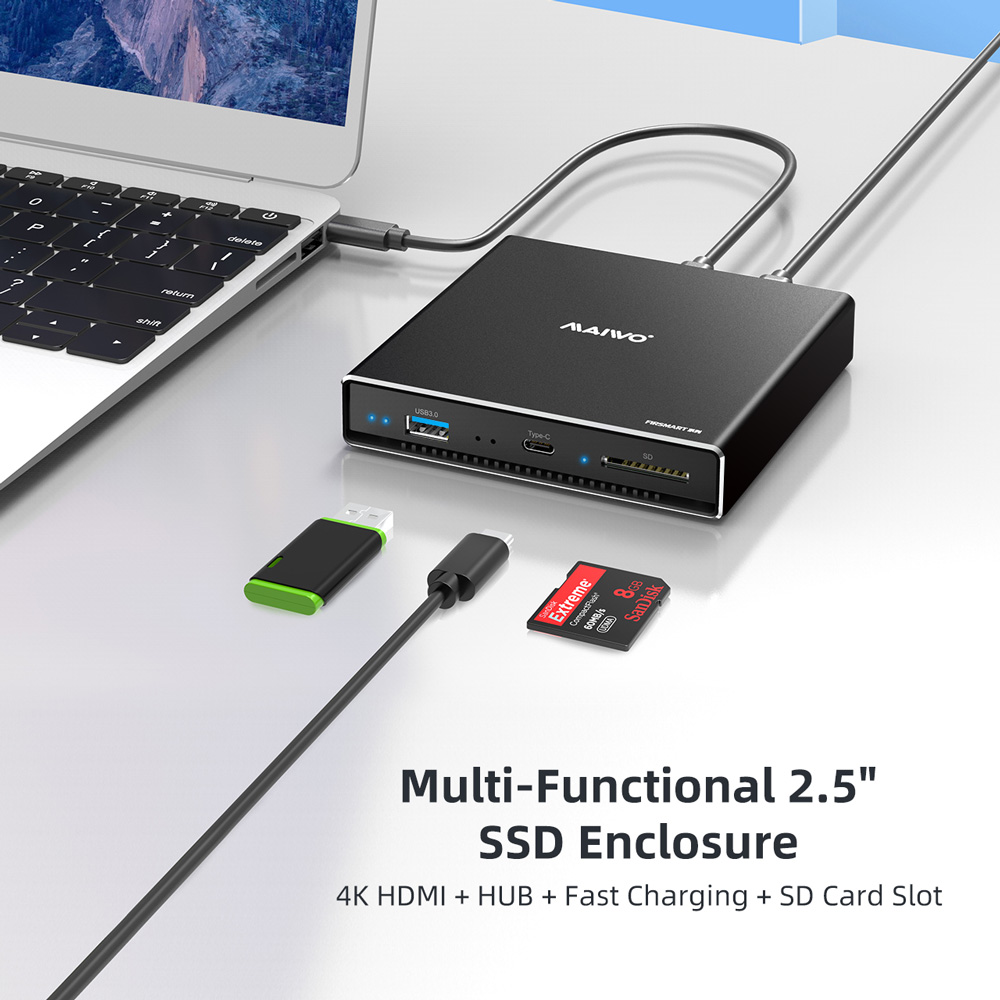In the world of digital data storage, hard drives have played a pivotal role in safeguarding our valuable information for decades. However, as technology advances, so do the ways we interact with our storage devices. One such innovation is the hard drive enclosure, which has generated some confusion among users. In this article, we will explore the fundamental differences between a hard drive and a hard drive enclosure, shedding light on their unique functionalities and applications.
Section 1: The Hard Drive
A hard drive, also known as a hard disk drive (HDD), is a primary data storage device widely used in computers, laptops, and servers. Inside a typical hard drive, one can find a series of spinning magnetic disks (platters) coated with a magnetic material and read/write heads that swiftly access and store data on these platters. The hard drive's magnetic storage mechanism allows it to retain data even when powered off, making it a non-volatile memory device.
Hard drives come in various form factors, such as 3.5-inch and 2.5-inch, with different storage capacities ranging from a few gigabytes to several terabytes. Due to their mechanical nature, hard drives have moving parts, making them susceptible to wear and tear over time. Nevertheless, they remain a reliable and cost-effective storage solution for various computing needs.
Section 2: The Hard Drive Enclosure
A hard drive enclosure, on the other hand, is an external casing designed to hold and protect an internal hard drive. The enclosure typically connects to a computer or other compatible devices using various interfaces such as USB, eSATA, Thunderbolt, or FireWire. The primary purpose of a hard drive enclosure is to allow users to transform an internal hard drive into an external one, granting portability and versatility to their data storage solutions.
Hard drive enclosures are available for both 3.5-inch and 2.5-inch hard drives, allowing users to repurpose old internal drives that might have been replaced during an upgrade. These enclosures are often made of materials like aluminum or plastic, providing a protective shield against physical damage and external elements.
Section 3: Key Differences
3.1. Portability and Connectivity:
The most notable difference between a hard drive and a hard drive enclosure lies in their portability and connectivity options. Internal hard drives are designed to be installed within a computer or server and are not meant to be easily disconnected and carried around. On the other hand, hard drive enclosures offer the convenience of external connectivity, enabling users to transport their data between different devices effortlessly.
3.2. Versatility and Upgradability:
Another significant advantage of using a hard drive enclosure is its versatility and upgradability. Users can swap internal hard drives in and out of the enclosure, making it a flexible solution for data storage. This also allows users to upgrade to larger capacity drives or switch to faster storage technologies without replacing the entire enclosure.
3.3. Form Factors:
Internal hard drives typically adhere to standard form factors like 3.5-inch or 2.5-inch, depending on their application. In contrast, hard drive enclosures are manufactured in various sizes to accommodate different form factors, offering compatibility with both desktop and laptop-sized drives.
3.4. Cooling and Power:
Internal hard drives benefit from the cooling systems of the devices they are installed in. In contrast, hard drive enclosures usually have their cooling mechanisms, which can vary in efficiency depending on the enclosure's design and materials used. Additionally, enclosures come with their power supply, requiring an external power source, while internal hard drives draw power from the host device.

In summary, a hard drive and a hard drive enclosure serve distinct purposes in the realm of data storage. The internal hard drive remains a stalwart storage device for computers and servers, while the hard drive enclosure offers external connectivity and portability for added convenience and flexibility. Understanding the differences between the two will help users make informed decisions when choosing the most suitable storage solution to meet their specific needs.